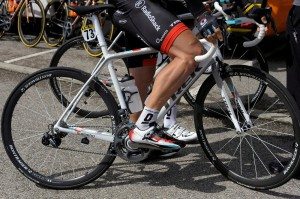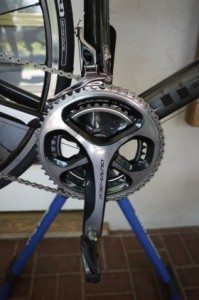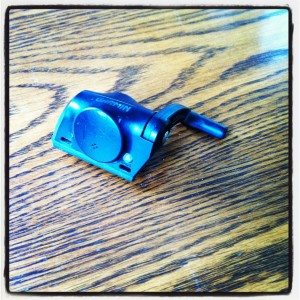Having retired my Vittoria Rubino Pros after about 5500 miles on them (and finally wearing through to the cords) I was in the hunt for a new set of rubber. As luck would have it, the Trexlertown VeloFest a couple weeks ago, and it was the perfect opportunity to score some new rubber at a good price. As luck would have it, I picked up a pair of Michelin Pro 4 Race Service Courses for $70, which was a pretty decent deal (and no tax either.) While I was not terribly fond of the Pro Race 3 (both for longevity and puncture reasons) I was willing to give these a go.
What's new?
Well, like any new product, “substantial research” was put into the development of the Pro 4. Michelin claims longer lifespan due to a dual tread compound with a more durable center tread. They also claim that technology trickling down from MotoGP has led to a more pointed profile which rolls faster and corners 13% better than the Pro 3. Tests apparently showed that the average lean angle increased from 21 degrees to 27.5 degrees before slipping. And most importantly, durability and puncture resistance has been increased substantially. All this supposed improvement led me to take a chance (although to be honest, at $35 per tire, it's not much of a risk.)
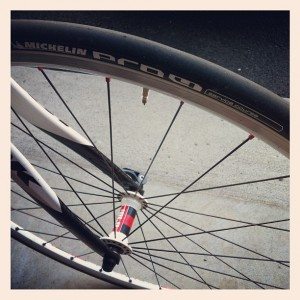
First impressions
My Rubino Pros weighed in at an average of 236 grams. The Pro 4s weighed in at 198 grams (average.) This equated to a total savings of 72 grams (about 1/6th of a pound, which isn't much.) The Pro 4s were quite a bit harder to mount up than the Vittorias, even for a set of new tires. They were TIGHT on the rim and I had to actually work to get them on, but they may stretch slightly over time. Once inflated, they are definitely more of an oblong/pointed profile as opposed to a round profile, and they seem to be closer to a true 23mm tire than the 23mm Rubino Pros (which were more like a 25mm.)
Sidebar: Yes, I know all about the research that shows how larger contact patches roll faster etc etc, but honestly the difference is so minimal that I'd sooner go for a better quality tire then a wider tire that rolls .001 mph faster. Now, back to the review at hand.
I inflated the front to 85 PSI and the rear to about 92 PSI and took off on a 67 mile ride. Right out of the gate, the Pro 4s seem to roll a bit quicker: while it's impossible to quantify via hard data, the Pro 4's didn't seem sluggish when coasting. Cornering seemed to be somewhat better than the Rubinos as well, but this could be due to the slick Pro 4 shoulders. The Vittorias felt a little “squishy” when being pushed to the absolute limit, which I chalk up to the shoulder siping squirming around a bit. Ride quality seemed to be a little compromised, which could very well be chalked up to the 110 tpi of the Pro 4 compared to the 150 tpi of the Rubino and the smaller volume. I wouldn't call it rough, but it certainly is a little bit more “chattery” which may be a turn-off for some riders. The best thing: no flats, even in wet conditions with cinders (and even some gravel roads.)
Overall
Since I've mounted them, I'v put about 250 miles on them. 250 miles is really not even close to enough time to form a solid opinion on these, but you know what they say: you only have one chance to make a first impression. So far, the Pro 4s have made a good one, and I hope that continues to be the case.
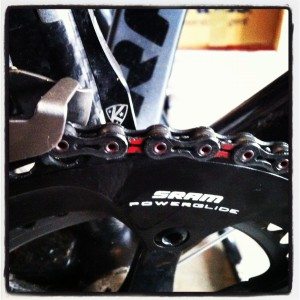 [dc]A[/dc]fter my Chain-L review some time ago, I've had a number of discussions with various people about the best way to lube a chain. While the traditional “dab it on, let it sink in, wipe off the excess” does work, there is a better way to do it, resulting in better penetration of lube and longer duration between applications. With that said, keep in mind that I lube a chain (using this method) on average of every 6 weeks or so, which typically means about 900-1100 miles of use.
[dc]A[/dc]fter my Chain-L review some time ago, I've had a number of discussions with various people about the best way to lube a chain. While the traditional “dab it on, let it sink in, wipe off the excess” does work, there is a better way to do it, resulting in better penetration of lube and longer duration between applications. With that said, keep in mind that I lube a chain (using this method) on average of every 6 weeks or so, which typically means about 900-1100 miles of use.